
The moustached antpitta is a Vulnerable species of bird placed in the family Grallariidae. It is found in Colombia and Ecuador.

The stripe-headed antpitta is a species of bird in the family Grallariidae. It is found in Bolivia and Peru.

The bay antpitta is a species of bird in the family Grallariidae. It is endemic to Peru.
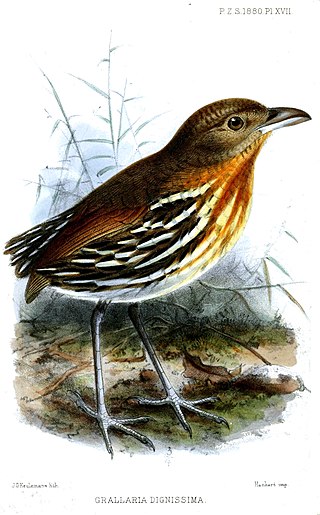
The ochre-striped antpitta is a species of bird in the family Grallariidae. It is found in Colombia, Ecuador, and Peru.

The elusive antpitta is a species of bird in the family Grallariidae. It is found in Brazil and Peru.
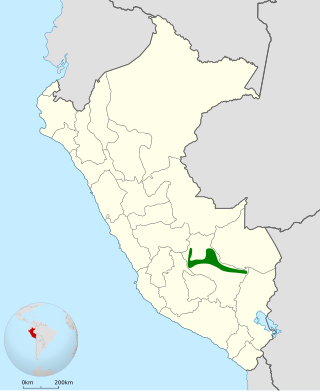
The red-and-white antpitta is a species of bird in the family Grallariidae. It is endemic to Peru.

The chestnut-naped antpitta is a species of bird in the family Grallariidae. It is found in Colombia, Ecuador, and Peru.

The rusty-tinged antpitta is a species of bird in the family Grallariidae. It is endemic to Peru.

Watkins's antpitta is a Near Threatened species of bird in the family Grallariidae. It is found in Ecuador and Peru.
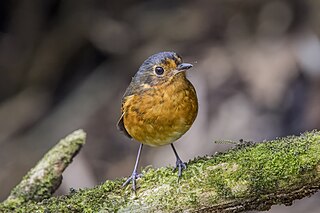
The slaty-crowned antpitta or slate-crowned antpitta is a species of bird in the family Grallariidae. It is found in Brazil, Colombia, Ecuador, Guyana, Peru, and Venezuela.

The Amazonian antpitta is a species of bird in the family Grallariidae. It is found in Bolivia, Brazil, and Peru.
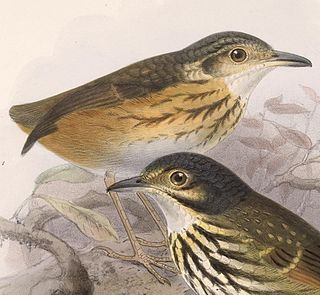
The thicket antpitta is a species of bird in the family Grallariidae. It is found in Colombia, Costa Rica, Honduras, Nicaragua, and Panama.

The white-lored antpitta or fulvous-bellied antpitta is a species of bird in the family Grallariidae. It is found in Colombia, Ecuador, and Peru.

The Bolivian earthcreeper is a species of bird in the Furnariinae subfamily of the ovenbird family Furnariidae. It is found in Argentina and Bolivia.
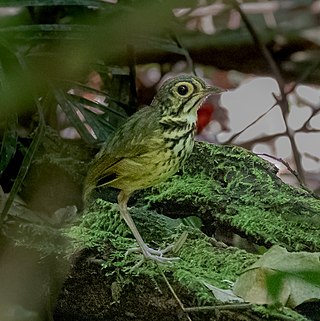
Snethlage's antpitta is a species of bird in the family Grallariidae. It is endemic to Brazil.
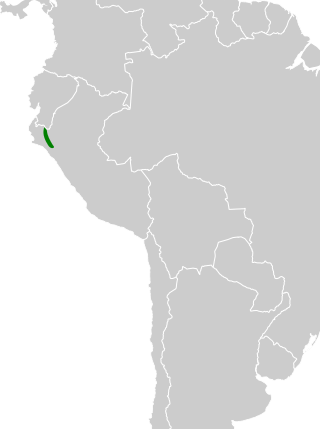
The Cajamarca antpitta is a species of bird in the family Grallariidae. It is endemic to Peru.
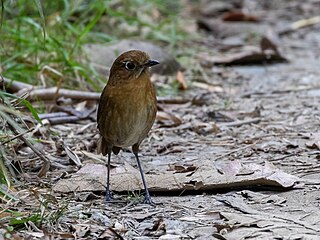
The Sierra Nevada antpitta is a species of bird in the family Grallariidae. It is endemic to the Sierra Nevada de Santa Marta in northern Colombia.
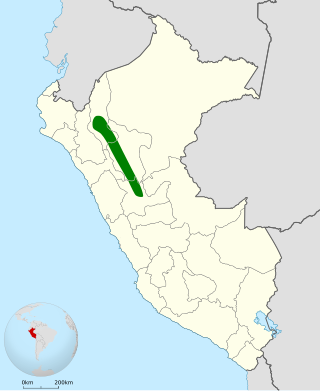
The Chachapoyas antpitta, or Graves's antpitta, is a species of bird in the family Grallariidae. It is endemic to Peru.
The Muisca antpitta is a bird in the family Grallariidae. The species was first described by Frédéric de Lafresnaye in 1843. It was formerly called the rufous antpitta, which in 2020 was found to be a species complex composed of as many as 15 species, some of which were newly described. It is found in the Andes of northern Colombia and western Venezuela.
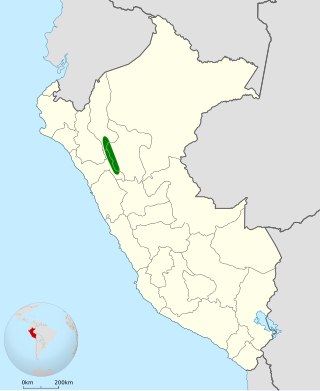
The Atuen antpitta, or southern tawny antpitta, is a species of bird in the family Grallariidae. It is endemic to Peru.






















